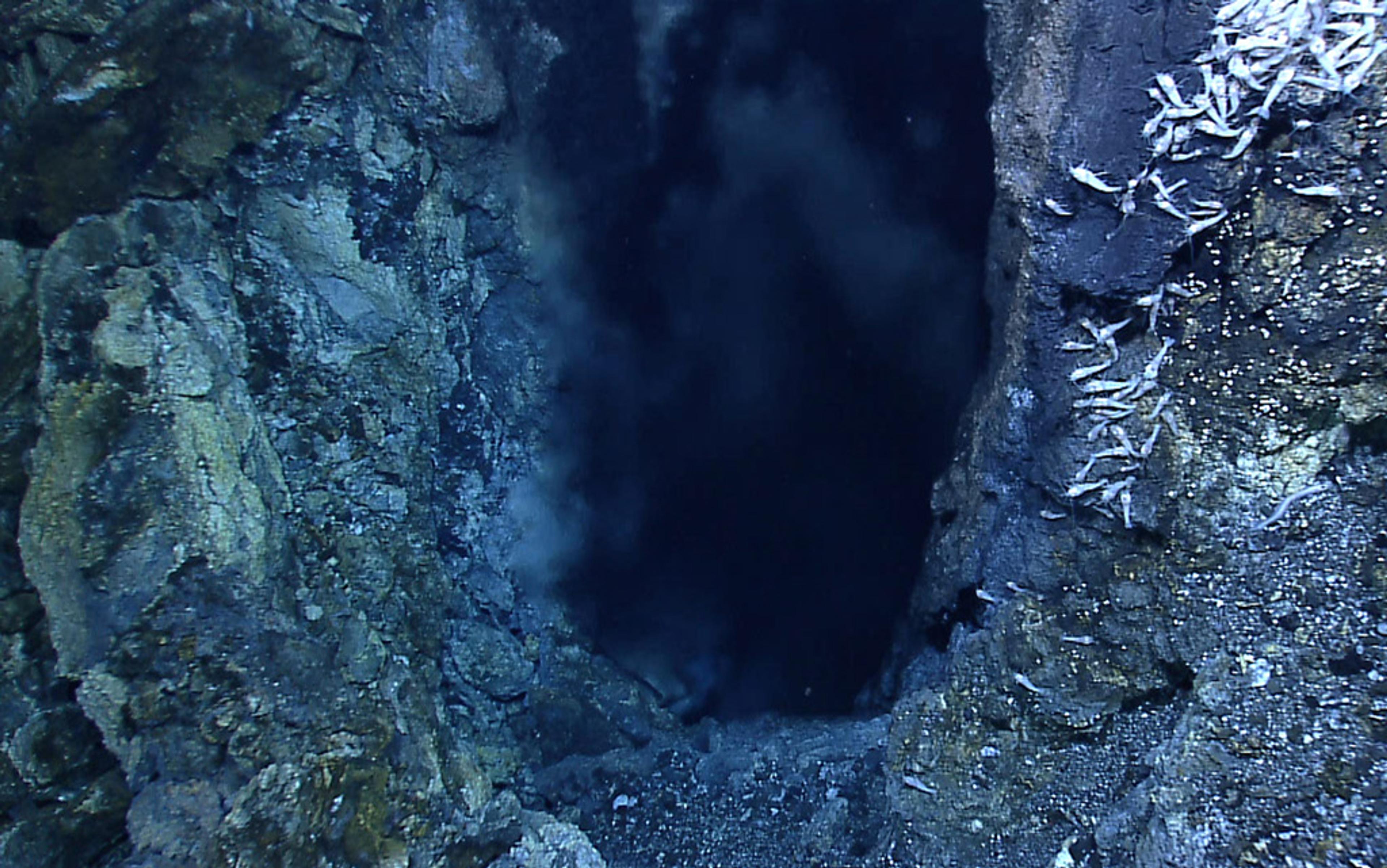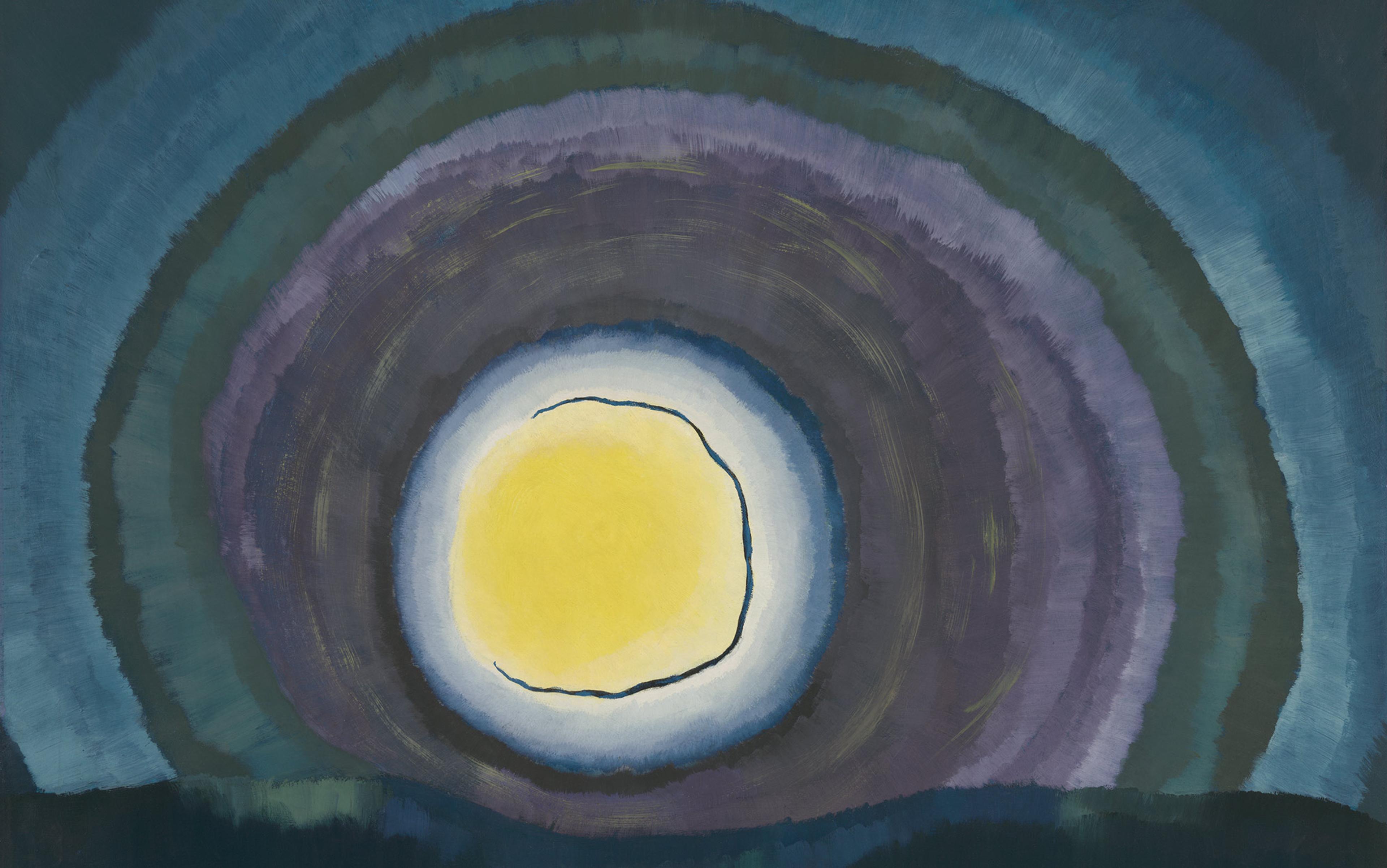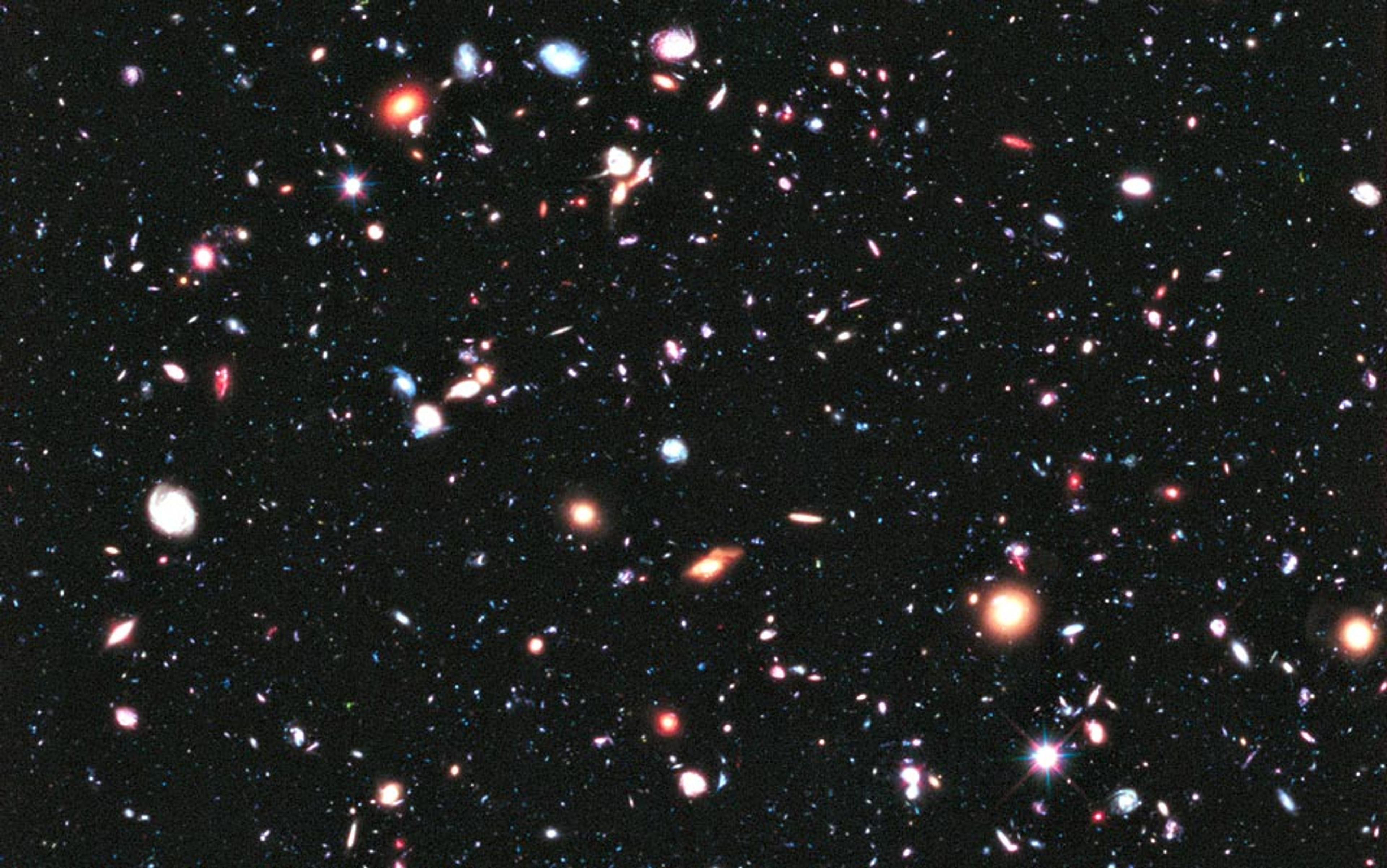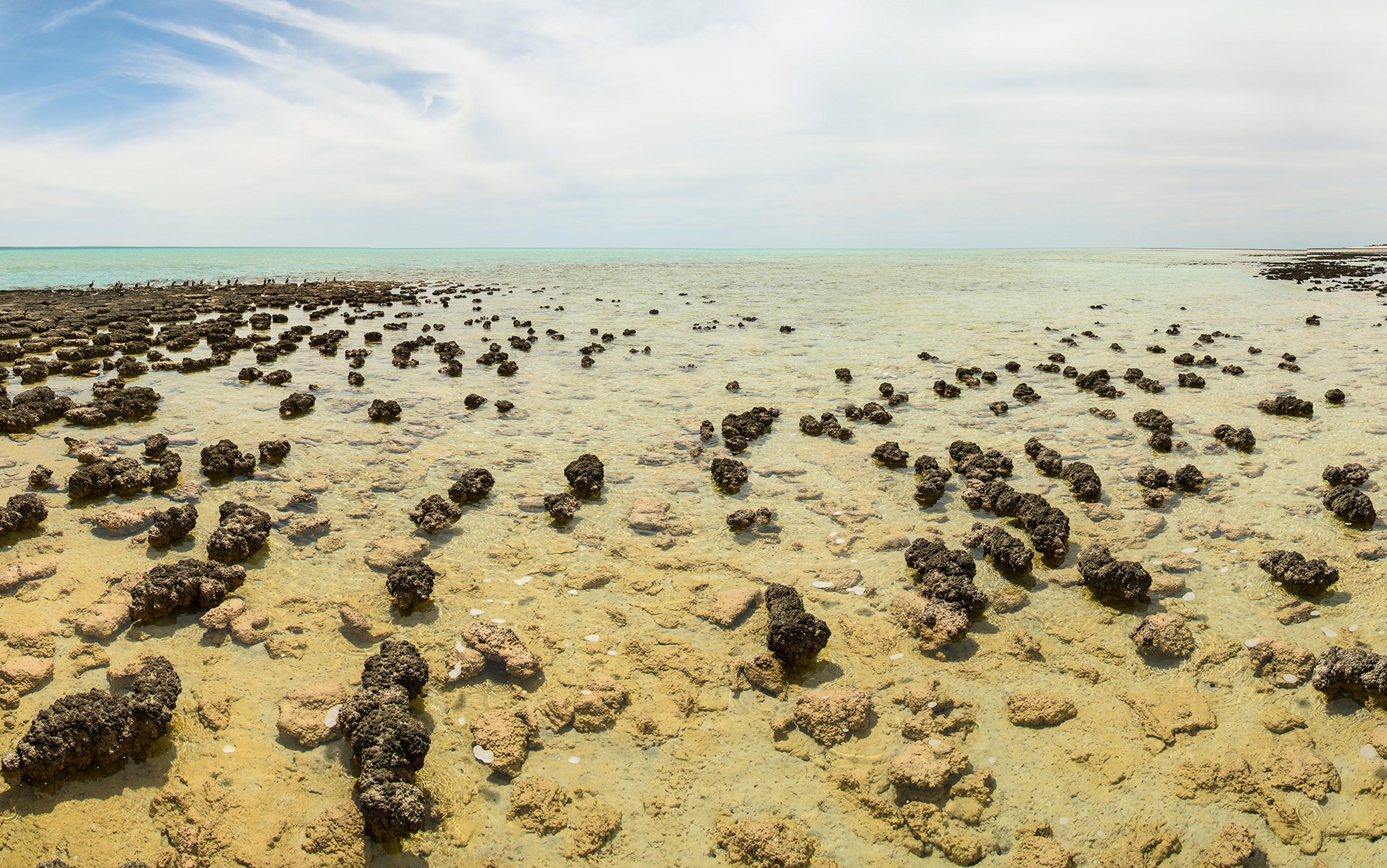In the late 1670s, the Dutch scientist Antonie van Leeuwenhoek looked through a microscope at a drop of water and found a whole world. It was tiny; it was squirmy; it was full of weird body types; and it lived, invisibly, all around us. Humans were supposed to be the centre and purpose of the world, and these microscale ‘animalcules’ seemed to have no effect – visible or otherwise – on our existence, so why were they here? Now, we know that those animalcules are microbes and they actually rule our world. They make us sick, keep us healthy, decompose our waste, feed the bottom of our food chain, and make our oxygen. Human ignorance of them had no bearing on their significance, just as gravity was important before an apple dropped on Isaac Newton’s head.
We could be poised on another such philosophical precipice, about to discover a second important world hiding amid our own: alien life on our own planet. Today, scientists seek extraterrestrial microbes in geysers of chilled water shooting from Enceladus and in the ocean sloshing beneath the ice crust of Europa. They search for clues that beings once skittered around the formerly wet rocks of Mars. Telescopes peer into the atmospheres of distant exoplanets, hunting for signs of life. But perhaps these efforts are too far afield. If multiple lines of life bubbled up on Earth and evolved separately from our ancient ancestors, we could discover alien biology without leaving this planet.
The modern-day descendants of these ‘aliens’ might still be here, squirming around with van Leeuwenhoek’s microbes. Scientists call these hypothetical hangers-on the ‘shadow biosphere’. If a shadow biosphere were ever found, it would provide evidence that life isn’t a once-in-a-universe statistical accident. If biology can happen twice on one planet, it must have happened countless times on countless other planets. But most of our scientific methods are ill-equipped to discover a shadow biosphere. And that’s a problem, says Carol Cleland, the originator of the term and its biggest proponent.
The idea came to Cleland, a philosopher at the University of Colorado at Boulder, when she spent a sabbatical year at the Centro de Astrobiología in Spain. She was studying the scientists, who were studying microorganisms.
‘If you have a sample of soil,’ she asked them, ‘how will you recognise what’s in it?’ The scientists rattled off the usual answers: slide it under a microscope, put it in a Petri dish, make millions of DNA copies, catalogue the genes. But that party line disturbed Cleland. ‘You couldn’t detect anything that wasn’t almost identical to familiar Earth life,’ she said. Their methods assumed that all microbes have genetic material that works like ours. Isn’t it possible, Cleland wondered, that life arose more than once here? If so, organisms from a second (or third) genesis would never turn up in our tests, because our tests are only meant to turn up familiar life. ‘But these organisms, if they exist, would leave traces in the environment,’ Cleland says.
In 2007 in the journal Studies in History and Philosophy of Biological and Biomedical Sciences, Cleland wrote about just such a trace: desert varnish. It’s a strange sheen, like a hardened waterfall, that covers desert rocks all over the planet. The streaks run down rocks from the desert of El Azizia in Libya to Antartica’s Dry Valley. Desert varnish – into which people have scraped petroglyphs for thousands of years – appears layer by layer, growing only the width of a human hair each millennium. The varnish is replete with arsenic, iron and manganese, although the rocks it coats are not. No known geochemical or biological process can account for its ingredients. And yet there it is. Since that discovery, Cleland has urged scientists not to discount – but to seek out – such anomalies as the varnish, things that don’t quite seem to fit. Because maybe they don’t fit.
Science’s modern-day explorers have unearthed increasingly anomalous organisms that are technically ‘familiar life’ – familiar in that they do adhere to the Central Dogma of molecular biology which explains the flow of genetic information in a biological system. Toxitolerants can live in nuclear waste; acidophiles can live in battery acid; obligate anaerobes die in the presence of oxygen; thermophiles thrive around hot vents deep in the ocean. Life, as they say in the movie Jurassic Park, finds a way.
But even the most familiar forms of life can be difficult to find. According to the latest estimates, we’ve discovered just 14 per cent of the dogma-following species on the planet. Of those, we can make only 1 per cent grow in the lab. A shadow biosphere might help us understand why. ‘Although we have good theoretical reasons for believing that life could be at least modestly different … we don’t know how different it could be,’ Cleland wrote in the seminal paper ‘The Possibility of Alternative Microbial Life on Earth’ (2005), co-authored with the astrobiologist Shelley Copley, also of the University of Colorado at Boulder. Just as a hammer and a sledgehammer can both pound a nail, other chemical combinations could lead to organisms that grow, adapt, respond to stimuli, and reproduce – that live, in other words. But which chemicals? And how? To understand that requires going back to the beginning.
Life on Earth might have begun in a ‘warm little pond’, as Charles Darwin said, or around an ocean vent. Or it might have come from a Martian meteorite. We just don’t know. What we do know is that half a billion years after Earth became a planet, molecules began to make copies of themselves. Many scientists believe that the first self-replicating molecules – a primitive form of gene-only life – were RNA. This ‘RNA World’ morphed into an increasingly complex place, where RNA led to DNA and proteins, rendering itself a backseat driver in the process. Others say that a long chain of purely chemical reactions spat out increasingly complicated organic molecules, which then sped up the reactions that produced even more organic molecules. This metabolism led to genetic ingredients after many cycles. And, eventually, to genes themselves.
Maybe different alphabetical combinations are still locked inside ancient organisms that putter invisibly around ocean vents
‘Modern’ DNA is the eventual conclusion of all the origin stories. DNA has three parts: a sugar called deoxyribose, a phosphate molecule, and one of four nucleic acid bases — either adenine, cyanine, guanine, or thymine (RNA uses another, called uracil, instead of thymine). But six other bases occur naturally, and the biodesigner John Chaput of Arizona State University wonders whether different molecules could do what DNA does. Maybe different alphabetical combinations are still locked inside ancient organisms that putter invisibly around ocean vents.
DNA isn’t the only place where other life could diverge, chemically, from the familiar. DNA instructs our bodies to produce certain proteins, which are conglomerations of 20 different amino acids. With the right starting ingredients and a UV nudge, amino acids naturally assemble themselves in the lab. They also coat comets, and their building blocks float aimlessly in interstellar space. They’re easy, abundant. And 100 of them exist. Shadow life could have 80 extra options on their hands (or whatever).
Even the same amino acids our DNA uses could have different shapes. If you make amino acids and sugars in the lab, you get two mirror-image types, called ‘left-handed’ and ‘right-handed’. But inside living things, you’ll find only left-handed amino acids and right-handed sugars. Shadow life could be ambidextrous, or a mirror image of regular life: its molecules could be flipped as if Photoshopped. The astronomer Dimitar Sasselov and the geneticist George Church at the Harvard Origins of Life Initiative want to build such mirror-world organisms. One day, they hope, their manufactured microbes will fall ill. ‘If there are right-handed lifeforms out there, many of them will be viruses – which will attempt to hijack the DNA of our bionic cells,’ Sasselov told The Guardian in 2013. And if viruses attack, we will know viruses exist. And if they exist, some of their prey must exist outside Harvard’s labs, having formed long before Harvard and long before labs.
Telling scientists to find a shadow biosphere is like asking a chimpanzee to add oil to a car: they don’t know what they’re looking for or what tools to use. Nevertheless, Cleland has some suggestions. First, look at life in places where life ‘shouldn’t’ be. Even the most sauna-happy microbes, called hyperthermophiles, wilt above 122° C. If we find anything living at 150° C, then there’s a good chance they’re not of our ilk. Send balloons into the upper atmosphere; scramble up to high plateaus; snowmobile to the South Pole; drive Land Rovers into the Atacama Desert; don end-of-world suits and venture into uranium mines. Remain alert for phenomena that make us say not ‘Eureka!’ but ‘Huh, that’s weird.’ And then consider that their explanation might, in fact, be very, very weird.
Another mysterious finding, like the desert varnish, involves excess gas. If you catalogue all the carbon that living things burp out, and then you count the carbon you find in the atmosphere, the two don’t match: there’s 5 per cent more hanging over our heads than there ‘should’ be. Maybe that extra comes from shadow organisms whose excretions we aren’t counting. Maybe not. Maybe we have already found shadow organisms – some of the shy- and stubborn-seeming microbes that won’t reproduce in our labs, which scientists build as breeding grounds for dogma-obeying life. Maybe they really are just reticent. But we should wonder harder.
if we look for life only as we know it, that’s all we’re going to find
So far, no systematic shadow-search plan exists. But back in 2010, a team led by the astrobiologist Felisa Wolfe-Simon at NASA did look for weird life in the salty, alkaline, arsenic-saturated waters of Northern California’s Mono Lake. Inside, Wolfe-Simon’s team found an organism that they dubbed GFAJ‑1. All known life on Earth uses phosphorus in its DNA. But when the team deprived GFAJ‑1 of phosphorus, it seemed to substitute the arsenic in its place. This pinch-hitting would kill the cells in your body, because although phosphorus sits just above arsenic on the periodic table and so shares sibling-like traits, the resemblance isn’t quite close enough. But GFAJ-1 seemed to continue just fine using arsenic. While that wouldn’t have made it exactly a shadow organism, it seemed only a step removed: familiar life that could behave, under duress, like shadow life.
The team sent a paper to Science, and NASA rushed a press conference. But Wolfe-Simon’s 15 minutes quickly became infamy, when other scientists failed to replicate her results. The bacteria grew in the arsenic bath, sure, but they still needed – and were still using – phosphorus. Just like a Siberian hermit is still human, GFAJ-1 was just regular life. The team’s minds were perhaps too open to the possibilities, but if we look for life only as we know it, that’s all we’re going to find.
The discovery of life as we don’t know it would hint that biology is a universal law, like physics and chemistry. If you drop a trombone off a terrestrial building, it will fall to the ground – every time. If molecular clouds have just the right density, dynamics and ingredients, they will collapse into new stars – every time. If they collapse into new stars, the leftover gas and dust will always collapse into planets. Maybe when those planets have the right ingredients baked at the right temperature, they always make life. A shadow biosphere – evidence that biology emerged more than once on Earth – suggests that biology emerges as a normal consequence of Goldilocks or just‑right conditions, rather than being a mysterious lottery-ticket phenomenon.
In 1670, when van Leeuwenhoek viewed the invisible microbial world, people were already accustomed to the idea of a world too small to see. It wasn’t really the philosophical existence of that world that set humanity’s throne teetering – it was that world’s newly revealed concreteness and complexity.
Today, if asked whether life concocts itself given the right conditions, many people would respond affirmatively. It’s not a new idea. But concrete, complex proof that we are the predictable result of a predictable law would tip over our throne, once and for all.






